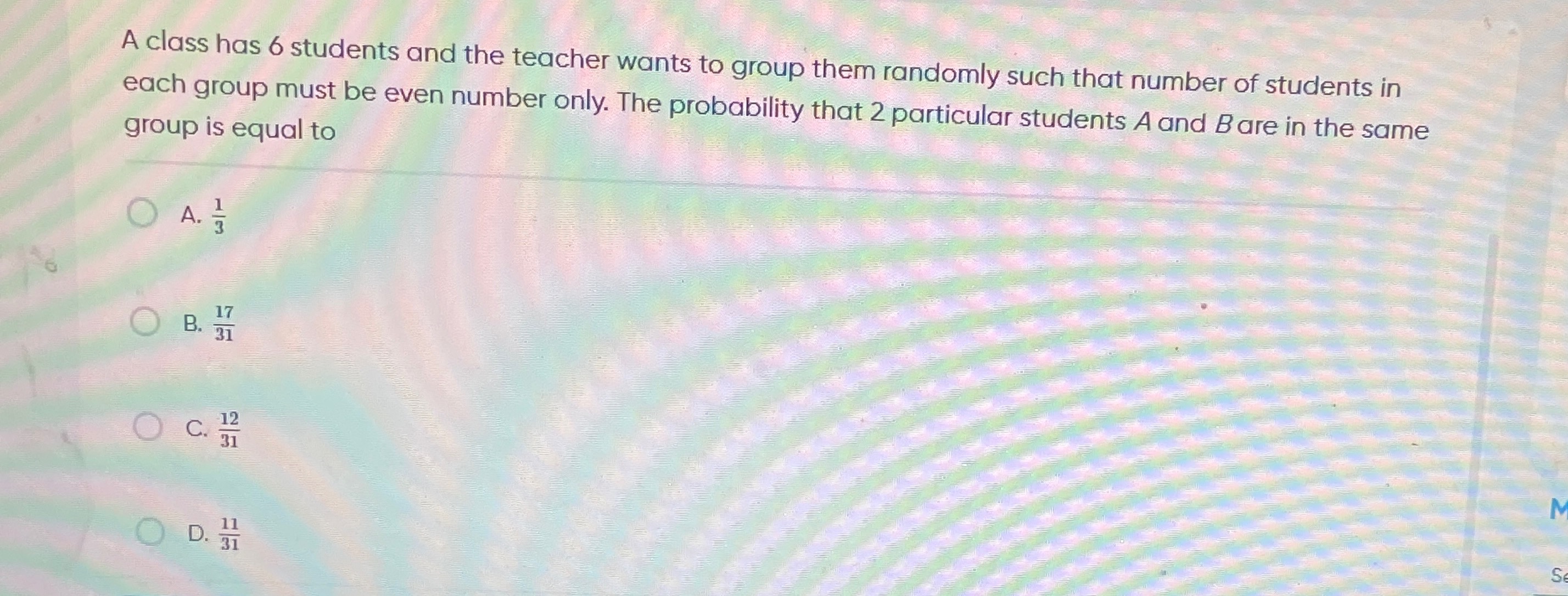Question
Question: A class has 6 students and the teacher wants to group them randomly such that number of students in ...
A class has 6 students and the teacher wants to group them randomly such that number of students in each group must be even number only. The probability that 2 particular students A and B are in the same group is equal to

31
3117
3112
3111
3111
Solution
The problem asks for the probability that two particular students, A and B, are in the same group, given that 6 students are randomly grouped such that the number of students in each group must be an even number.
First, we determine all possible ways to partition 6 students into groups with only even numbers of students. The possible group sizes are:
- One group of 6 students.
- One group of 4 students and one group of 2 students.
- Three groups of 2 students each.
Next, we calculate the total number of distinct ways to form these partitions:
-
Case 1: One group of 6 students. Number of ways = (66)=1.
-
Case 2: One group of 4 students and one group of 2 students. Number of ways = (46)×(22)=15.
-
Case 3: Three groups of 2 students each. Since the group sizes are the same, we divide by 3! to account for indistinguishable groups. Number of ways = 3!(26)×(24)×(22)=615×6×1=15.
The total number of distinct valid partitions is 1+15+15=31.
Now, we find the number of partitions where students A and B are in the same group:
-
Case 1: A and B are in the group of 6. This is the single partition where all 6 students form one group. Number of favorable ways = 1.
-
Case 2: A and B are in the same group of size 4 (from the (4, 2) partition). We need to choose 2 more students from the remaining 4 students (excluding A and B) to join them in the group of 4. Number of ways = (24)=6.
-
Case 3: A and B are in the group of size 2 (from the (4, 2) partition). If A and B form the group of 2, the remaining 4 students must form the group of 4. Number of ways = (44)=1.
-
Case 4: A and B are in the same group of size 2 (from the (2, 2, 2) partition). If A and B form one group of 2, we need to partition the remaining 4 students into two groups of 2. Number of ways = 2!(24)×(22)=26×1=3.
The total number of favorable ways is 1+6+1+3=11.
The probability is the ratio of favorable ways to the total possible ways: Probability = 3111.
